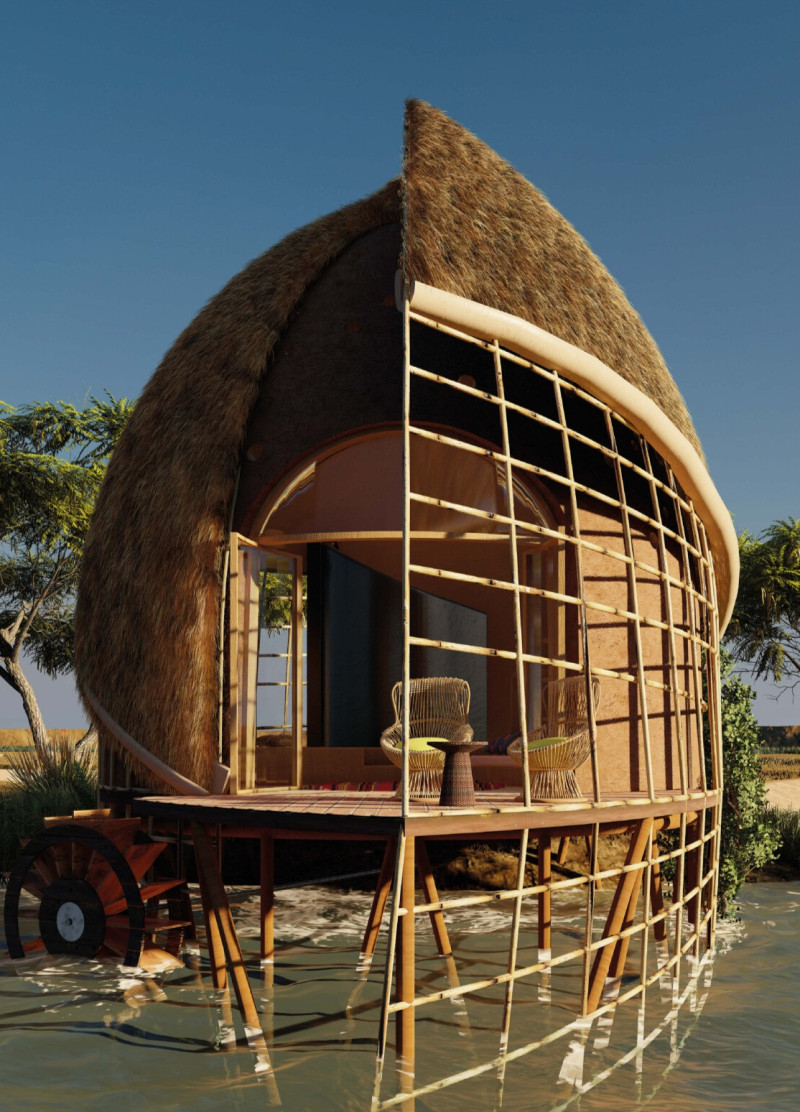5 key facts about this project
At the heart of the project is its function, which serves [describe the primary function, such as residential living, community gatherings, educational purposes, etc.]. The layout is meticulously crafted to facilitate flow and interaction, allowing spaces to transition smoothly from one to another, thereby enhancing the user experience. This deliberate spatial organization fosters a sense of community and connectivity, crucial in today’s architectural discourse.
The design approach takes into account various factors, including site orientation, environmental impact, and local culture. By addressing these elements, the project showcases a strong commitment to sustainability through the use of eco-friendly materials and energy-efficient systems. The selection of materials reflects a blend of modernity and connection to tradition, with choices such as reinforced concrete and natural wood featured prominently throughout the design. These materials not only provide structural integrity but also impart a tactile warmth and create visual interest, establishing a welcoming atmosphere.
The incorporation of glass facades is particularly noteworthy. This design choice maximizes natural light, enhancing the overall ambiance of the interior spaces while creating a seamless connection to the outdoors. Views of the surrounding landscape are integrated thoughtfully, allowing occupants to appreciate natural beauty while promoting a sense of well-being. The strategic use of outdoor areas and landscaping elements further complements this approach, transforming the project into a cohesive part of the local environment.
Unique design ideas emerge throughout the project, highlighting the innovation at play. For instance, the incorporation of multifunctional spaces allows adaptability to various uses, demonstrating a forward-thinking philosophy that anticipates the evolving needs of its occupants. The interplay of indoor and outdoor spaces is designed to encourage interaction, making it a dynamic environment conducive to community engagement.
Attention to detail is another hallmark of this architectural design. Elements such as contemporary furnishings, carefully selected fixtures, and a color palette that flows harmoniously with the natural surroundings are meticulously curated to enhance the overall experience. These details ensure that users feel connected to the space while also benefiting from its functional attributes.
Moreover, the project embraces modern technological advancements, incorporating smart building systems that optimize energy usage and improve occupant comfort. These innovations reflect an understanding of current and future needs, ensuring that the design remains relevant over time. The outcome is not just a physical structure but a comprehensive living space that prioritizes livability, efficiency, and environmental responsibility.
In summary, this architectural project stands as a testament to a well-conceived design that resonates with both its immediate environment and the broader context of contemporary architecture. The combination of thoughtful functionality, material selection, and innovative design strategies creates a compelling case for the importance of adaptability and sustainability in modern architectural practice. Readers are encouraged to explore the project presentation further to gain deeper insights into the architectural plans, architectural sections, and architectural designs that contribute to this unique project. Engaging with these elements will provide a clearer perspective on the architectural ideas that shape this fascinating design.


 Manuel Franchimont,
Manuel Franchimont,  Atty Poelma,
Atty Poelma, 























